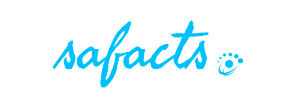How To Avoid Copyright On Youtube
Avoiding copyright issues on YouTube is essential to keep your videos monetized, viewable, and safe from takedown. YouTube uses Content ID, a system that automatically detects copyrighted content—so even unintentional use can lead to strikes or demonetization.
Here’s how to stay copyright-safe on YouTube:
✅ 1. Use Only Content You Own or Have Rights To
- Create original content—your own video, music, voiceovers, and graphics.
- If using others’ content, get explicit permission or a license.
- Even short clips or background music can be flagged.
🎵 2. Use Royalty-Free or Licensed Music
- Choose music from safe sources:
- YouTube Audio Library (free and safe to use)
- Royalty-free sites like Epidemic Sound, Artlist, or AudioJungle
- Check the license terms—some require credit in the video description.
🛑 Avoid uploading music you bought (like from iTunes)—purchasing a song doesn’t give you the right to use it in videos.
🎬 3. Don’t Use Movie, TV, or Game Clips Without Rights
- Using footage from shows, films, or video games—even for reviews—can trigger claims.
- If you’re a reviewer or commentator, ensure your video follows fair use guidelines (more below).
⚖️ 4. Understand Fair Use (But Don’t Rely on It Lightly)
- Fair use may apply for:
- Commentary
- Criticism
- Educational content
- Parody
⚠️ Fair use is not guaranteed, and even a strong case can still be challenged or claimed. Use it carefully, and consider adding original commentary or analysis to transform the content.
🧰 5. Use YouTube’s Tools
- Content ID Check (in YouTube Studio) scans uploads for copyrighted material before they go public.
- Audio Library for safe background music and sound effects
- Enable monetization checks before publishing videos if you’re in the Partner Program.
🚫 6. Avoid Common Misconceptions
- ❌ “I gave credit to the creator” → still copyright infringement without permission.
- ❌ “It’s under 30 seconds” → YouTube can still detect and flag it.
- ❌ “I changed the pitch or speed” → Content ID still often detects it.
✉️ 7. Dispute Claims Only When You’re Sure
- If you receive a copyright claim or strike:
- Review the claim details.
- Dispute it only if you own the rights or qualify under fair use.
- Filing a false dispute can lead to legal action or channel termination.
🧠 8. Educate Yourself & Stay Up to Date
- Read YouTube’s Copyright Policies
- Join forums or creator communities to learn from others’ experiences.
